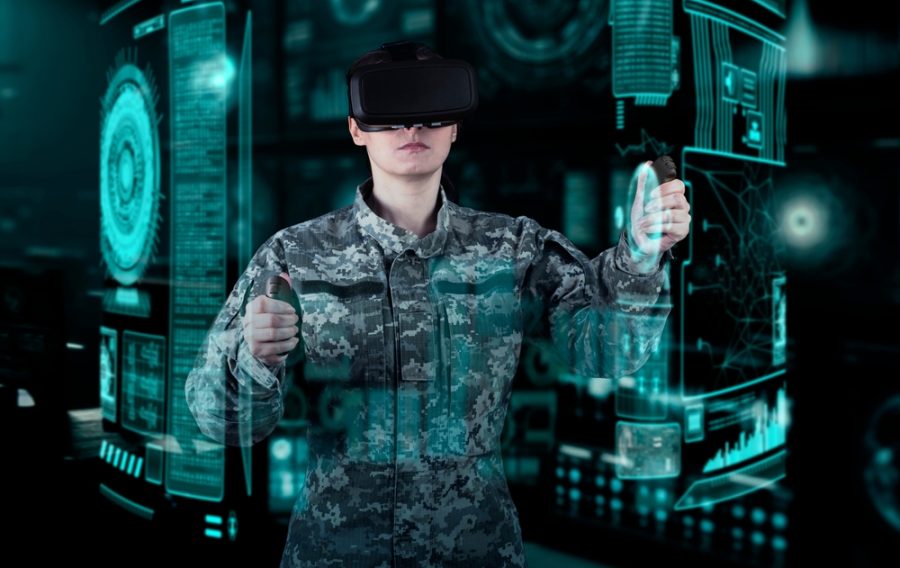
Digital technologies are re-shaping all areas of society and all industry sectors and national security is no exception. However, the defence sector tends to lag behind other sectors when it comes to digital transformation and the adoption of IP technology.
While other sectors have embraced advanced digital systems, defence organisations have struggled to take any significant leap forward. Many of their existing systems still operate in independent environments often on legacy technology and are rarely connected to the cloud.
By Xavier Mongin, Global Director for the Alcatel-Lucent Enterprise Government, Defence, and Smart cities sectors
What are the challenges facing the sector when it comes to digital transformation?
Security
Firstly, defence organisations must place security at the heart of their decision-making process. The need to protect critical data has prevented the sector from adopting digital technology. Complex regulation such as the Defence and Security Public Contracts Regulations (DSPCR) which limits the information that can be supplied to contractors and can require them to have security clearance for certain projects, has also slowed things down. However, in recent years, advances in digital technology have established IP systems as offering proven, secure and, trusted solutions.
Budget
Much like other public sectors, the Defence department operates with limited resources. In the 2022/23 financial year, the UK spent £54.2Bn on defence, however 35% of this was spent on capital expenditure and over 20% of this was spent on personnel. Digital transformation of key IT systems has simply never been a priority.
Competition
The defence sector is largely competing on the battlefield – not within the economy. For this reason, it has been primarily focused on ensuring the technological prowess of battlefield assets and connected warfare systems. This has meant that ITC systems have fallen by the wayside.
Culture
Cultural reticence to change is another significant factor in the sector’s delay in digitally transforming. A culture of top-down management and general resistance to change has meant that the military has been unwilling to move away from legacy systems. The chain of command requires senior-level officials to approve major change initiatives, meaning that the influx of digital natives into the workforce since the millennium has had less of an impact than in other sectors.
More recently, however, this strategy is undergoing significant change. In January, a £150M contract was awarded with the aim of transforming the UK’s Ministry of Defence. The MOD aims to construct a ‘digital backbone’, which will allow seamless access to data, enabling faster and better decisions. Additionally, the new Labour government has pledged to raise defense spending to 2.5% of GDP – partly in an attempt to modernise Britain’s security services in the face of a volatile international environment.
What’s driving the acceleration of digital transformation?
Increased amount of data
Data is a strategic asset. Even before modern technology came into play, knowledge of your capabilities and how they compare to your opposition has been a key facet of the art of war. However, with IoMT (Internet of military things), which according to a report from Global Data,is predicted to have a market size of $807bn by 2025, defence organisations now have the capacity to capture huge volumes of data. A common system of formatting, communicating and analysing this data is necessary to exploit it at the tempo necessary to achieve advantage.
Complexity of modern conflict
The framework that defence organisations operate within has undergone rapid change over the last decade. Traditional delineations of air, land and sea operations have given way to a more complex global view. To navigate international conflict effectively, these independent siloes must become part of a highly-connected network with real-time data sharing and communications between each department.
Well Developed Digital Infrastructure
Information and communications technologies (ICTs) have matured to the point where many of the technological concerns of the past are no longer an issue. Cost-effective, easy-to-deploy digital solutions built on standard protocols are available today to support digital defence workplaces with efficient communications and collaboration. Many also provide the high level of cybersecurity defence organisations need.
The Way Forward
Defence organisations must now take steps to bring their systems up to date. An effective transformation will create a centralised digital environment which can securely store and move data to support and enable personnel in every domain. To create the infrastructure that will support this environment, defence organisations should apply proven approaches to digital transformation from the private and public sector.
Smart buildings may serve as a useful model for the defence sector. These buildings leverage Internet of Things (IoT) technologies to intelligently monitor and manage everything from lighting and heat to surveillance systems at key access and exit points. Military bases can take many of the key learnings from smart building technology, and integrate existing and new technology into a coherent ICT framework.
Perhaps the most important consideration for defence organisations is how to attract and retain top talent. These individuals will be instrumental in masterminding and maintaining the ICT infrastructure needed for the sector’s digital transformation. Existing defence personnel must embrace horizontal processes across siloes and be educated on cybersecurity procedures, if the transition is to be successful.
If you would like to join our community and read more articles like this then please click here








